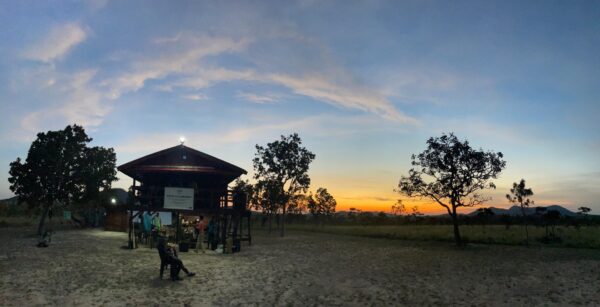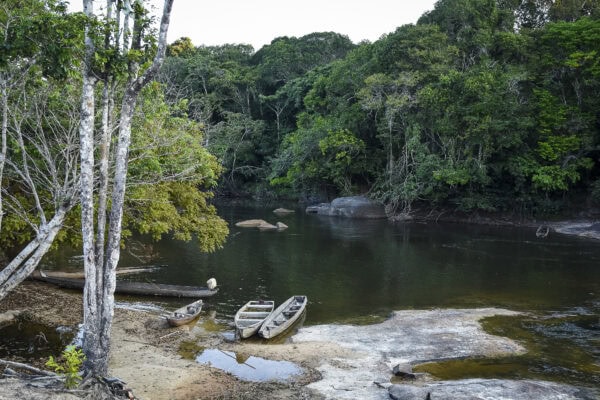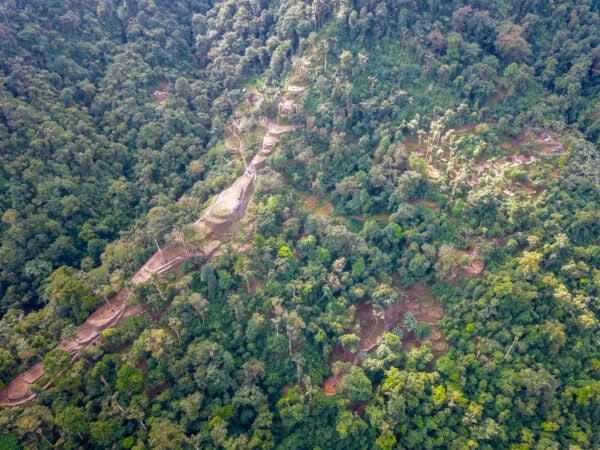This document is an English translation of a press release from the Colombian National Parks System: October 29, 2019.
This recording of new species resulted from a scientific expedition carried out in the Puerto Abeja stream basin and along the Mesay and Cuñare rivers, in the southern sector of the protected area in the department of Caquetá.
Bogotá, October 29, 2019. As a result of a recent scientific expedition that took place in the Serranía de Chiribiquete National Park, more than 328 species of fauna and flora were identified.
The expedition, carried out in the framework of the GEF Heart of the Amazon project, conducted inventories of flora, birds and diurnal butterflies in terrestrial ecosystems associated with the soc-called tepuis (terra firme forest, flooded forest, and grasslands). Eight camera traps were installed in the Puerto Abeja stream basin, and 18 sampling stations for fish were established in the Mesay and Cuñare rivers and in several of their tributary streams.
The process was led by the Puerto Rastrojo Foundation and was supported by the Amazon Conservation Team – Colombia, the Pontificia Universidad Javeriana, the Amazon Institute for Scientific Research (SINCHI), local experts of the Mesai, Aduche, Monocha and Nonuya indigenous reserves of Villa Azul, and members of neighboring populations of the southern zone of the protected area in the municipality of Solano, Caquetá.
The following were inventoried: for flora, 683 individuals corresponding to 152 species; for birds, 97 individuals of 35 species; and 97 individuals of diurnal butterflies associated with 50 species.
With regard to the inventory achieved by camera traps, which were installed in areas of flooded forests, 71 individuals of mammals were recorded, including the peccary and the anteater, as well as 12 species of birds, among which were two species of curassow, one species of trumpeter, and one species of tinamou. This inventory revealed the presence of a large proportion of mammals in the Puerto Abeja sector, demonstrating a healthy state of conservation of the area. For example, the presence of jaguars (Panthera onca), considered an umbrella species, implies the existence of populations of other species such as medium-sized rodents, deer and pigs.
91 species of fish were recorded. New locations were identified for Hyphessobrycon sp. n. “Chiribiquete”, a new species for science; Anchoviella juruasanga, a new species for the country; and two vulnerable species: Pseudoplatystoma punctifer (striped) and the Zungaro (yellow).
Due to the variety of aquatic ecosystems (white, clear or black waters; acidic; and low in nutrients) in which the sampling was conducted, it is evident that the abundance of species is not evenly distributed in the area. In fact, some species predominate that can be considered typical of the streams that are born in the tepuis, and of the Mesay, Amú, and Cuñaré rivers.
The results of this scientific expedition add to those already recorded in previous expeditions, which together contribute to generate knowledge about this giant continental protected area of 4,268,095 hectares.
Share this post
Bring awareness to our projects and mission by sharing this post with your friends.




